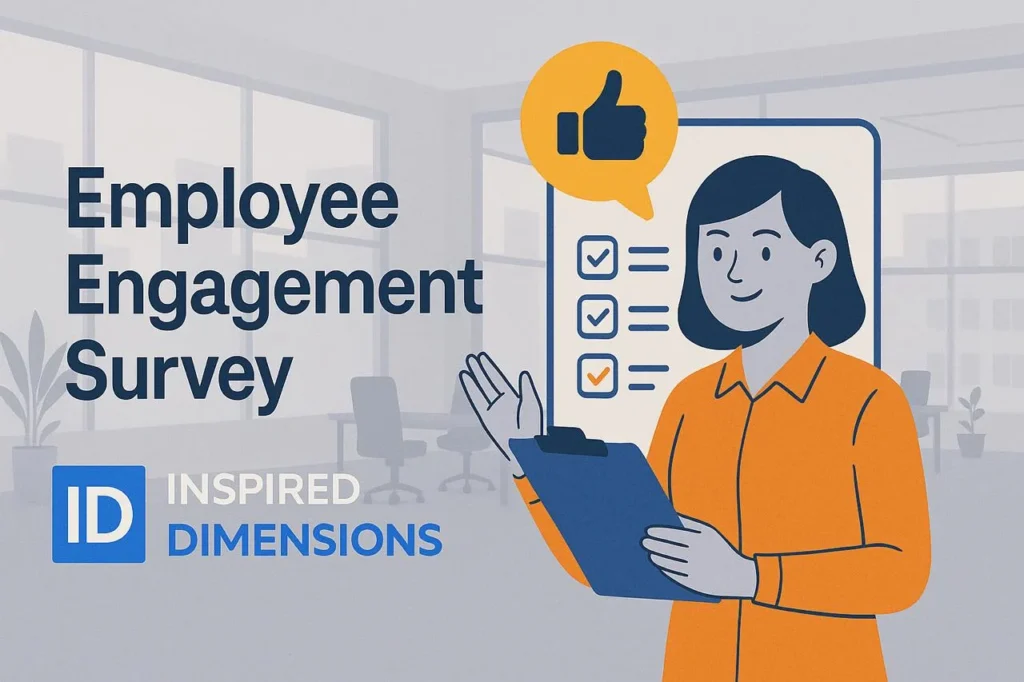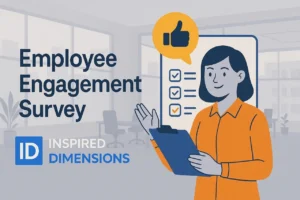1. Why the Basics No Longer Work
The gulf between effort and impact lies in execution: poorly framed questions, low trust in anonymity, and—worst of all—silence after the results land. Many employees now treat surveys as venting exercises because leadership rarely follows through. To rebuild credibility, surveys must evolve from annual ritual to living feedback engine.
2. Start With a Clear Listening Strategy
Before drafting questions, pinpoint what you need to learn and how you will act. Ask leaders:
• Which strategic priorities hinge on engagement?
• Which decisions will we revisit once we have the data?
• Who owns the follow‑up actions and resources?
3. Design Questions That Matter—And Keep Them Short
Researchers recommend 20–30 core questions plus a handful of rotating deep‑dive items. Long questionnaires depress response rates; participation drops steeply once surveys exceed ten minutes. Resist the urge to ask everything—each question should tie to a leadership lever.
4. Guarantee Psychological Safety
Trust drives candour. Communicate, repeatedly, that responses are anonymous, data are stored securely, and leaders welcome criticism. Consider using an external platform to reinforce neutrality. In sectors with heavy regulation or small teams, add a free‑text confidential hotline so sensitive issues surface safely.
• Responses are anonymous.
• Data will never be used for individual performance decisions.
• Leaders will share back what they learn and the actions they will take.
5. Time the Survey for Attention, Not Convenience
Avoid fiscal‑year close, peak vacation, or major product launches. Many firms have moved to quarterly pulse surveys—three to five questions sent on a rolling schedule—to sustain momentum without fatigue and to test interventions in real time.
6. Drive Response Rates With Targeted Campaigns
High‑performing organisations:
• Launch a CEO video explaining why feedback matters.
• Use multi‑channel nudges (email, chat, mobile push).
• Let employees complete the survey during paid time—especially frontline teams without desk access.
7. Pair Quantitative Scores With Open‑Text Insight
Numbers show where pain points sit; comments reveal why. Keep prompts simple—“What one thing would improve your experience here?”—and promise to share aggregate themes verbatim.
8. Segment, Benchmark, and Prioritise
Cut the data by function, tenure, manager, location, or demographic to spotlight systemic inequities. External benchmarks help calibrate ambition, but don’t chase league‑table vanity metrics. Focus on the two or three lowest‑scoring drivers that most affect business outcomes, such as career growth, recognition, or psychological safety.
9. Close the Loop Fast—Within 30 Days
Credibility evaporates when silence follows the survey. Adopt a 30‑30‑30 rule:
• Day 0–30 – Share high‑level results enterprise‑wide and thank employees.
• Day 30–60 – Each manager discusses local data with the team and agrees one action.
• Day 60–90 – Track and publish progress; recognise early wins.
10. Equip Managers—They Are the Trust Bridge
Managers explain up to 70 % of engagement variance. Provide them with interpretation guides, coaching on difficult conversations, and peer forums to swap ideas. Tie a slice of managerial bonus to demonstrated improvements, not just survey completion.
• One‑page interpretation guides.
• Coaching on difficult conversations.
• Access to peer forums for idea sharing.
11. Integrate Surveys Into a Continuous Listening Ecosystem
Annual snapshots miss the pulse of hybrid, project‑based work. Combine:
• Always‑on channels (digital suggestion boxes, ethics hotlines).
• Pulse surveys for rapid sentiment checks.
• Lifecycle surveys at key moments—onboarding, promotion, exit.
12. Use AI Responsibly—Explain the Algorithms
Generative AI can summarise comments or predict attrition risk, but opaque models breed suspicion. Publish a plain‑language FAQ on:
• What data are used.
• How predictions are generated.
• Who can see individual‑level outputs (ideally, no one).
• How bias audits are performed and findings addressed.
13. Celebrate Progress Publicly
Recognition fuels engagement: employees who feel valued are 87 % less likely to leave. Spotlight teams that turn insights into impact—for example, a support centre that cut handle time after redesigning workflows suggested in comments. Storytelling transforms abstract scores into tangible proof that speaking up works.
14. Measure Business Impact, Not Just Survey Scores
Link engagement improvements to downstream KPIs such as productivity, retention, and customer NPS to demonstrate ROI. When CFOs see a connection between a three‑point engagement uptick and lower attrition costs, budget for listening programmes becomes non‑negotiable.
Our Thoughts
Employee engagement surveys remain the most scalable way to hear every voice—but only when organisations listen with intention and act with urgency. By clarifying purpose, designing trust‑centred instruments, closing feedback loops quickly, and embedding continuous listening, HR can transform a tired compliance exercise into a flywheel of performance, culture, and innovation. The result is a workforce that believes “my opinion counts”—and that belief is the first step toward world‑class engagement.






